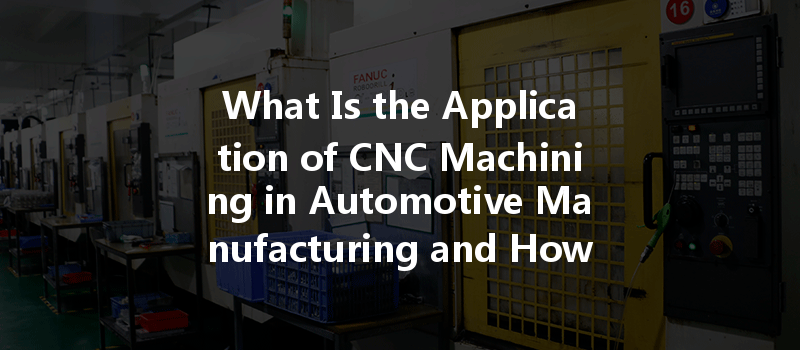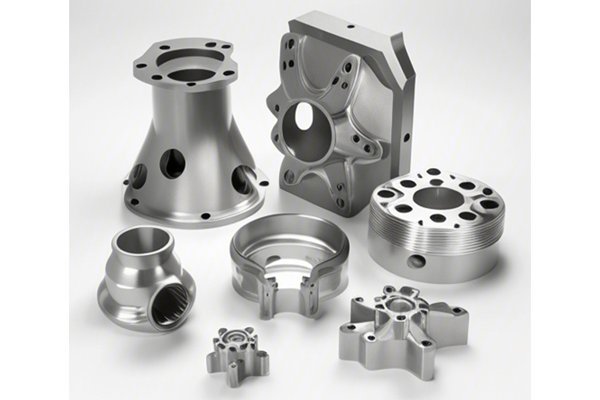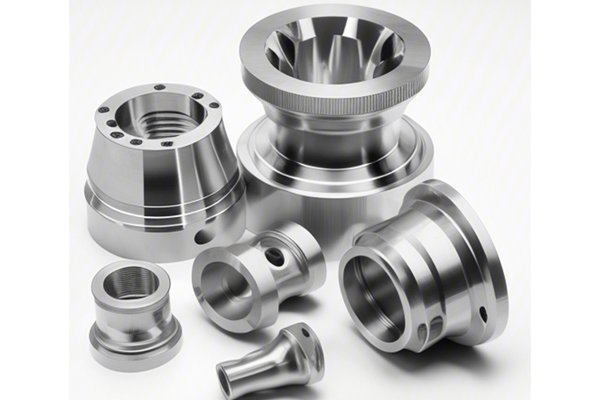Did you know that the automotive industry is one of the largest consumers of CNC (Computer Numerical Control) machining technologies, accounting for over 25% of the global CNC machine market? This staggering statistic speaks volumes about the transformative power that CNC machining has on the automotive sector. From intricate components to large assemblies, CNC machining enables manufacturers to produce high-quality parts with precision and efficiency.
In this blog, we’ll explore the critical applications of CNC machining in automotive manufacturing, including how it enhances efficiency, quality, and cost-effectiveness. We’ll provide a detailed examination of its techniques, advantages, and the enormous impact it has on the future of the automotive industry.
CNC machining is a subtractive manufacturing process controlled by a computer program. It involves using pre-programmed software to dictate the movement of machining tools and machinery. CNC machines can accurately cut, drill, mill, and slice various materials to create precise parts. This process dramatically improves product quality while minimizing human error.
1.1 The Mechanics Behind CNC Machining
CNC machines operate based on a set of coded instructions, typically written in G-code. The equipment interprets these codes to adjust the speed, feed rate, and movement of the tools. This high degree of automation brings consistency and replicability to manufacturing processes, making it an ideal option for the automotive industry, where precision is non-negotiable.
CNC machining serves a wide range of applications within the automotive sector. Here are some key areas:
2.1 Prototype Development
In automotive manufacturing, rapid prototyping is vital for testing designs before full-scale production. CNC machining allows manufacturers to create accurate prototypes quickly, enabling them to assess fit, function, and form, leading to faster iterative cycles in design.
2.2 Production of Engine Components
CNC machining is heavily employed in producing complex engine components like cylinder heads, crankshafts, and camshafts. These parts require high levels of precision, as even the smallest deviation can lead to engine inefficiency or failure. Manufacturers utilize CNC machining for its capacity to maintain tight tolerances and ensure parts meet strict specifications.
2.3 Manufacturing of Transmission and Drivetrain Parts
The transmission and drivetrain systems in vehicles consist of multiple components that must align precisely. CNC machining comes into play to manufacture gears, shafts, and housing with perfect accuracy. The ability to customize and adapt designs in real-time only enhances CNC machining’s role in this segment.
2.4 Interior and Exterior Trim Parts
The automotive industry also relies on CNC machining for producing interior and exterior trim components. Dashboards, door panels, and casing require design flexibility and tooling efficiency, which CNC machining easily provides. The technology allows manufacturers to quickly shift from one design to another without incurring significant downtime.
2.5 Functional Testing and Quality Assurance
CNC machining plays a vital role in functional testing and the quality assurance of automotive components. By using CNC machining to create calibration tools and fixtures, manufacturers can ensure that the final products precisely meet the required specifications.
Now that we’ve covered the primary applications of CNC machining in automotive manufacturing, let’s look at some of its advantages:
3.1 Precision and Consistency
One of the biggest advantages of CNC machining is its ability to produce parts with higher precision than traditional manufacturing methods. This consistency is vital for automotive components that require precisely engineered specifications.
3.2 Increased Efficiency
CNC machines operate continuously, enabling manufacturers to significantly reduce production times. Automation makes it easier to manage increased workloads without sacrificing quality or precision. This means that companies can offer competitive pricing while keeping up with consumer demand.
3.3 Reduction of Waste
CNC machining optimizes material usage, minimizing waste throughout the manufacturing process. Advanced software allows for detailed simulations that calculate the most efficient way to cut materials. This efficiency of material usage translates to cost savings for manufacturers.
3.4 Flexibility in Design Changes
With the speed of modern automotive production, designs often need to be modified quickly. CNC machining allows for rapid changes without the need for new molds or tools, reducing production delays and associated costs.
3.5 Cost-Effectiveness
Though the initial setup costs for CNC machining can be high, the long-term benefits outweigh these factors. Reduced labor costs, less waste, and the elimination of slow and costly manual processes make CNC machining a cost-effective solution over time.
To leverage the full potential of CNC machining, it is essential to focus on various strategies that enhance efficiency within the production environment:
4.1 Investing in Advanced CNC Technology

Automakers should invest in the latest CNC technologies, such as 5-axis machining and multi-axis systems. These advancements enable manufacturers to create more complex components in a single setup, thus reducing the need for multiple machines and processes.
4.2 Implementing Automation
Integrating automation with CNC machining methods allows automotive manufacturers to streamline operations further. Machine tenders, robotics, and automated inspection systems can work alongside CNC machines to operate them faster and more effectively.
4.3 Software Optimization
Using modern manufacturing software can optimize CNC machining processes. This includes simulation software to create virtual setups and test designs before production, which can save substantial time and resources.
4.4 Supply Chain Integration
Optimizing the supply chain is critical when implementing CNC machining in automotive manufacturing. Working closely with suppliers to develop just-in-time inventory systems can help maintain production lines while reducing the likelihood of part shortages.
4.5 Employee Training
Continuous skill development and training for employees is essential to successfully implement advanced CNC machining processes. By investing in education, companies can ensure that their workforce can operate equipment efficiently and solve potential issues promptly.
Despite its many advantages, using CNC machining in the automotive industry is not without challenges:
5.1 High Initial Investment
The cost of CNC machines and software can be prohibitively high for some manufacturers, especially small operations. Finding funding and understanding ROI is crucial for automakers contemplating this shift.
5.2 Complexity of Operations
While CNC machining automates many processes, it also requires a highly skilled workforce to operate and maintain the equipment. The training costs and employee turnover can pose challenges.
5.3 Material Limitations
Certain materials present challenges for CNC machining due to their hardness or machinability, necessitating further investment in specialized tooling and equipment.
5.4 Potential for Maintenance Issues
Regular maintenance of CNC machines is essential to avoid downtime. However, unplanned maintenance can disrupt production schedules, creating challenges for manufacturers.
CNC machining technology is continuously evolving, and several trends are shaping its future:
6.1 Integration of Artificial Intelligence
The incorporation of artificial intelligence (AI) will offer advanced predictive analytics, enabling manufacturers to anticipate maintenance needs, optimize machining outcomes, and even automate programming based on historical data.
6.2 Sustainability Focus
With increasing pressure for sustainability in manufacturing, CNC machining will evolve to incorporate eco-friendly practices, reduce energy consumption, and improve recycling efforts in the automotive sector.
6.3 Hybrid Machining Systems
Hybrid systems that combine additive and subtractive manufacturing techniques enhance design flexibility and prepare manufacturers for complex future applications.
6.4 Customization and Personalization
As consumer desire for personalized vehicles increases, CNC machining will play a crucial role in enabling custom design capabilities, allowing manufacturers to respond to market demands swiftly.
CNC machining has revolutionized the automotive manufacturing industry, providing unparalleled precision, efficiency, and adaptability. Its diverse applications range from prototype development to complex engine components, making it a cornerstone of modern automotive production.
The advantages of CNC machining, such as increased efficiency, reduced waste, and cost-effectiveness, contribute significantly to the competitiveness of automotive manufacturers in the global market. By understanding the challenges and future trends associated with CNC machining, manufacturers can make informed decisions that position them for success.
As we reflect on this transformative technology, it’s clear that CNC machining is paramount for any automotive manufacturer aiming to stay at the forefront of the industry. As developments continue to unfold, it’s crucial for professionals and stakeholders in the automotive field to stay informed and ready to embrace the changes that CNC machining will bring.
By addressing consumer needs for efficiency, quality, and sustainability, CNC machining not only shapes the present of automotive manufacturing but also sets the stage for an exciting and innovative future. It’s an industry worth watching closely.






